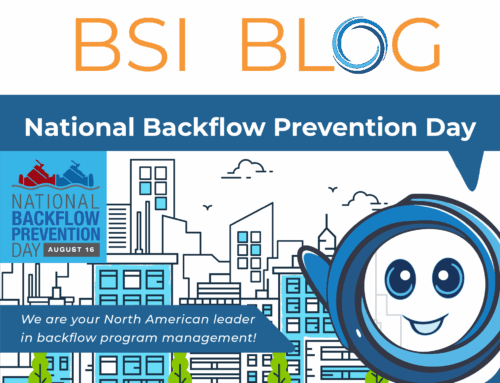This has to be one of the most popular questions we get at BSI. Daily it seems like clockwork, a water customer will receive a notification announcing that the annual testing of their backflow assembly is coming due and then call in to ask, “why?” So, let us dive into at least three reasons I see as an answer to this question – 1) design and operation of the backflow assembly, 2) common sense, and 3) state regulations and manufacturer recommendations.
Backflow assemblies are manufactured with epoxy coated or stainless-steel bodies and internal checks and O-rings are made with a different variety of rubber compounds. Combine that with either a hard or soft water supply and you will get varying degrees of performance. Some check discs simply will not hold up under hard water conditions. Some assembly bodies are notorious for scaling and severe rusting that will foul the checks. Backflow assemblies with hinged checks instead of poppet checks are well known for collecting sand and debris and fouling out. All of these factors are the reason that an ongoing maintenance program is necessary for proper operation.
In essence, these backflow assemblies are simple mechanical devices. For proper operation, a maintenance program is necessary for your automobile, heating and cooling units, lawn mowers, etc. Why shouldn’t the same thought process apply to your backflow prevention assembly? The backflow assembly is installed to protect the public water supply. Without ensuring it is operating properly, the quality of the water supply is in jeopardy.
Because of the design and operation of a backflow prevention assembly, and the importance of protecting the water supply, all manufacturers recommend that annual testing takes place. As such, all cross–connection state regulations and local ordinances require a testing schedule, the vast majority dictating testing on an annual basis. In some extreme hazardous situations, testing schedules have been created to require testing on a quarterly or semiannual basis.











